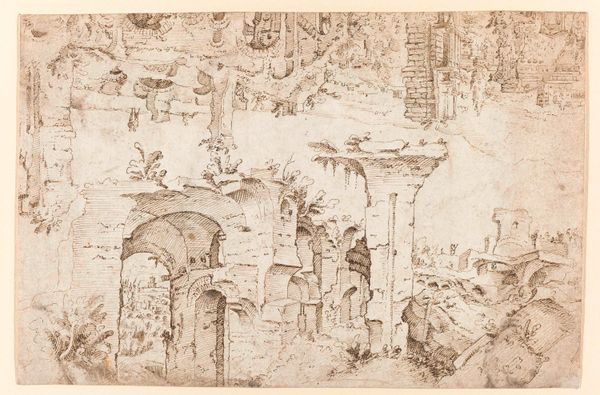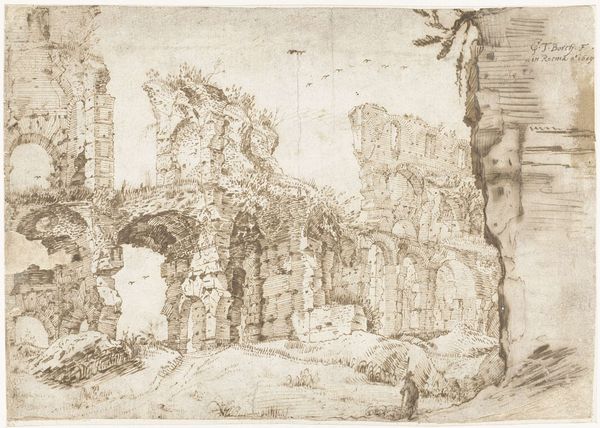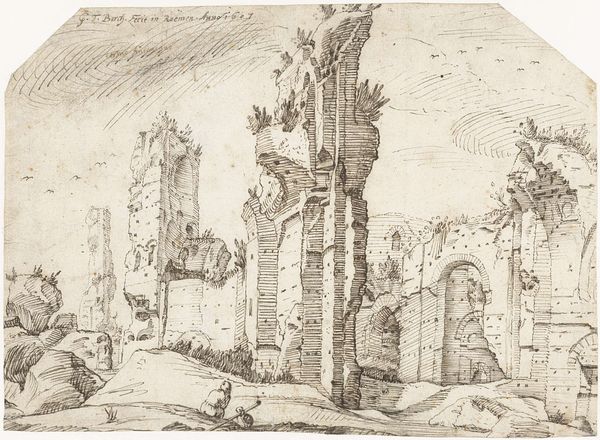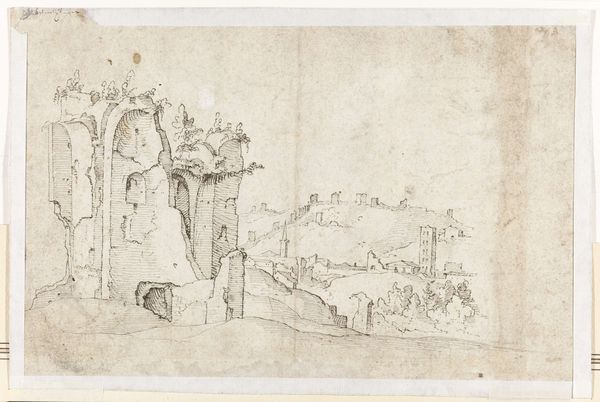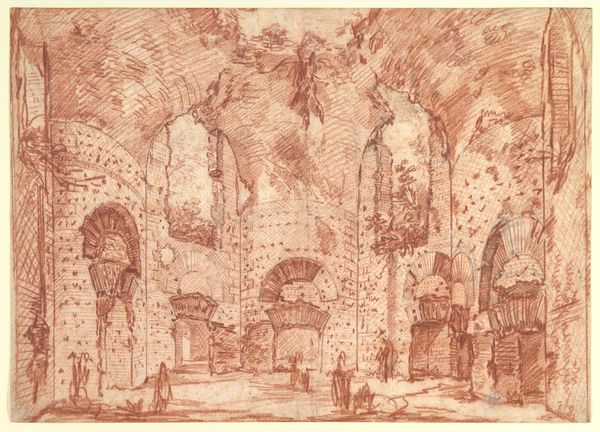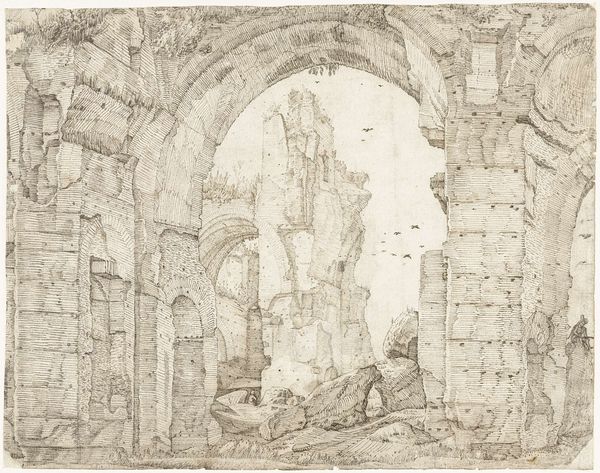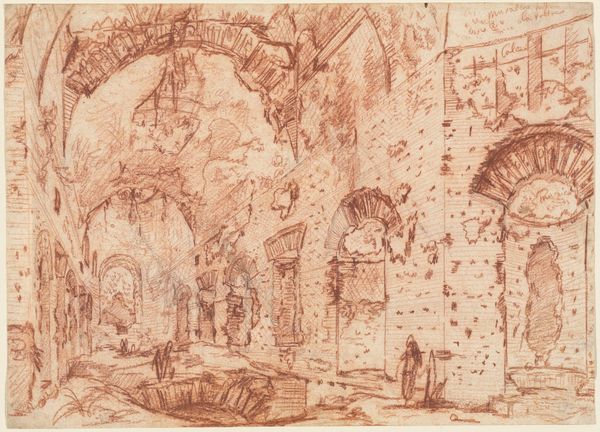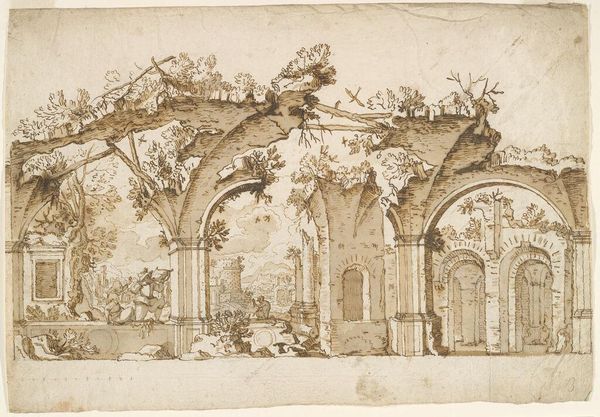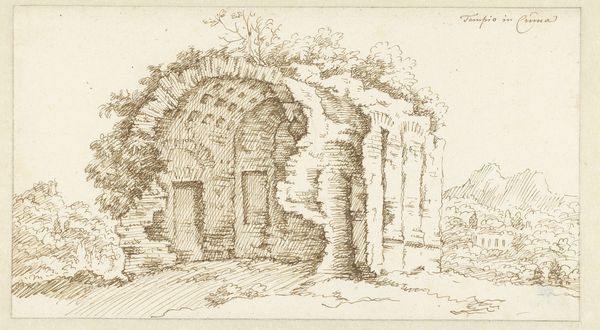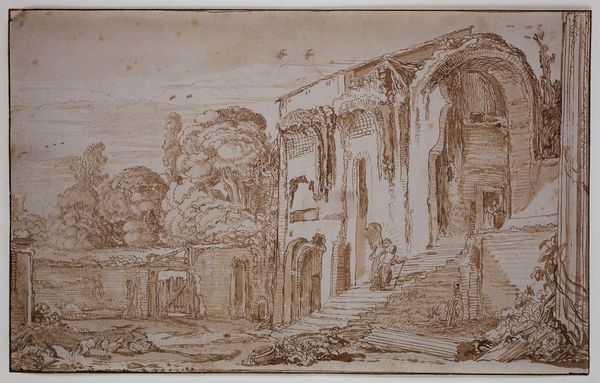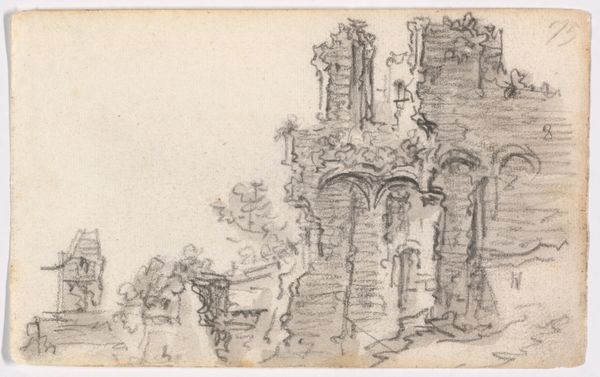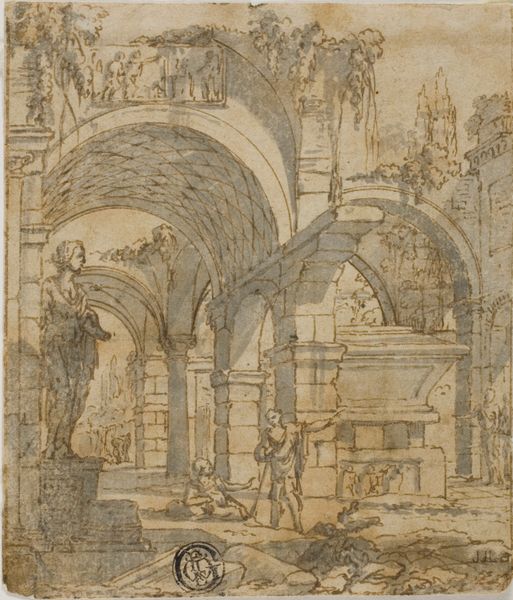
drawing, etching, ink
#
drawing
#
etching
#
landscape
#
etching
#
charcoal drawing
#
ink
#
line
#
cityscape
#
history-painting
#
italian-renaissance
Dimensions: 202 mm (height) x 284 mm (width) (bladmaal)
Cornelis Cort created this drawing of the interior of the Colosseum in Rome using pen and brown ink in the 16th century. The arches, repeated throughout the Colosseum, become more than just architectural features. The arch motif evokes a sense of transition and continuity, echoing ancient triumphal arches. The arch as a symbol dates back to Mesopotamian cultures and was later adopted by the Romans, signifying power, victory, and the passage of leaders and armies. In Christian iconography, the arch appears in depictions of the Annunciation, where it frames the Virgin Mary, symbolizing divine intervention and transition into a new spiritual state. Over time, the arch has resurfaced in various forms, from Gothic cathedrals reaching towards the heavens to modern bridges connecting distant lands. Psychologically, it speaks to our innate desire for connection and passage, engaging viewers on a deep, subconscious level. The arch has evolved and taken on new meanings in different historical contexts, representing a cyclical progression of architectural and cultural memory.
Comments
No comments
Be the first to comment and join the conversation on the ultimate creative platform.
